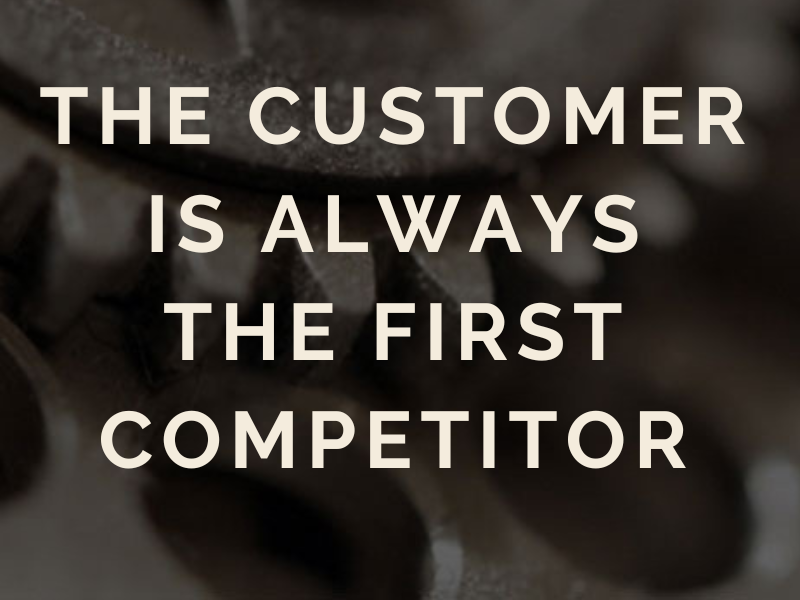Every business, whether it’s a startup launching a novel product or a well-established firm, faces a multitude of competitors. But have you ever considered your customers as your very first competitors? This may sound counterintuitive, but understanding this paradoxical concept can provide profound insights into business dynamics and competitive strategy.
In the world of business, customers have an array of choices at their fingertips. Your offerings are not only competing against those of direct rivals but against a myriad of other actions your customers could choose to take. Whether it’s choosing a different product, service, or even choosing to do nothing, your customer is always your first competitor. They hold the ultimate power of choice, making them the judge and jury of your revenue-related competitive decisions.
Perhaps you’re questioning this unconventional perspective, wondering, “How can my customer be my competitor?” This confusion is quite natural and is often rooted in traditional views of competition. We tend to see competition as something external, an enemy to defeat. But the reality is, competition is inescapable, and it exists in complex, intertwined relationships of choice, competition, and collaboration.
As an entrepreneur, when you introduce a new product or service, you are essentially stepping into an ongoing race. You are competing with what your potential customers are already doing, which might even be nothing. To convince customers to purchase, your product or service must displace something in their existing world. This displacement demands more than just the existence of your product. It requires a tangible advantage over the current way of doing things that will make customers want to switch.
This is where the third pillar—collaboration—comes into play. To incite this change, you must be willing to share your advantage with your customers, effectively transforming them from competitors into collaborators.
Collaboration, in this context, is about creating a mutually beneficial relationship where the relative advantage of your offering is shared. You provide a product or service that is superior in some way to the customers’ current choice, and in return, the customer chooses your product, generating revenue for your business.
Successful businesses understand that competition isn’t solely about outperforming rivals; it’s about understanding the customer’s world, their current choices, and how your product or service can provide an advantage significant enough to shift their decision. Moreover, they recognize the importance of transforming this competitive relationship into a collaborative one.
At the end of the day, business isn’t a battlefield where only one can emerge victorious. Instead, it’s more like a dance, where understanding, adapting to, and moving with your partner—the customer—leads to a harmonious performance. Thus, recognizing your customer as both your first competitor and collaborator could be the key to orchestrating your business success.
Whether you are an entrepreneur or an experienced business leader, it’s time to reflect: How are you addressing the competition posed by your customers? How are you turning this competition into collaboration? Remember, your business’s growth and success hinge not just on the competitors you can see but on understanding and navigating the intricate dynamics of customer competition and collaboration.

 Enactive Leadership – A New Paradigm for Leading Organizations
Enactive Leadership – A New Paradigm for Leading Organizations